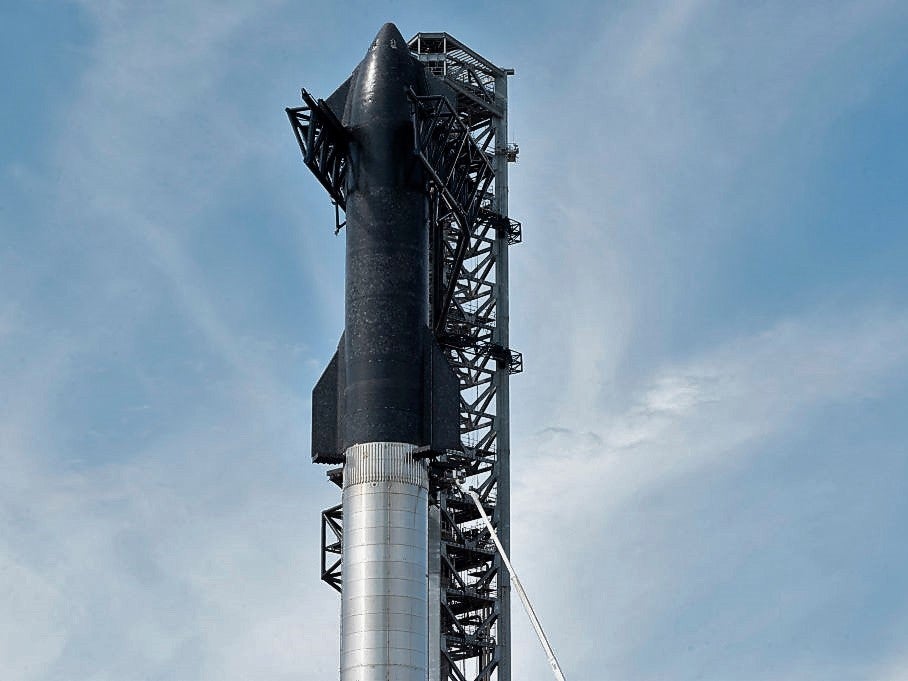‘It won’t be boring’: SpaceX Starship launch may end in explosion, Elon Musk hints
Billionaire says world’s biggest rocket is ‘key to expanding life beyond Earth’

Your support helps us to tell the story
This election is still a dead heat, according to most polls. In a fight with such wafer-thin margins, we need reporters on the ground talking to the people Trump and Harris are courting. Your support allows us to keep sending journalists to the story.
The Independent is trusted by 27 million Americans from across the entire political spectrum every month. Unlike many other quality news outlets, we choose not to lock you out of our reporting and analysis with paywalls. But quality journalism must still be paid for.
Help us keep bring these critical stories to light. Your support makes all the difference.
SpaceX chief executive Elon Musk “guaranteeing excitement” for the upcoming test launch of the Mars-bound Starship rocket.
Speaking at the Morgan Stanley 2023 Technology, Media and Telecommunications conference this week, Mr Musk said the debut orbital launch of the next-generation spacecraft would hopefully take place this month from the company’s Starbase facility in Texas.
He said there was “hopefully above a 50 per cent chance” of reaching orbit, though acknowledged there was a significant chance it would end in failure. Previous high altitude flight tests of earlier versions of Starship have resulted in fiery explosions.
“I am not saying it will get to orbit but I am guaranteeing excitement,” he said. “It won’t be boring.”
SpaceX is still awaiting regulatory approval from the Federal Aviation Administration (FAA), which will be required before any launch attempt is made.
Starship and its accompanying Super Heavy booster is the most powerful rocket ever built, capable of producing up to 7.25 million kg of thrust – nearly double that of the current record held by Nasa’s Space Launch System (SLS).
Starship is being developed to fulfil a $1.15 billion contract with Nasa to deliver astronauts to the Moon as part of the Artemis program.
Beyond that, Mr Musk sees the rocket as integral to his ambitions to send the first people to Mars, with the ultimate goal of setting up a permanent human colony on the Red Planet.
“This is a very difficult programme,” Mr Musk said at the conference. “The rocket is roughly two-and-a-half times the thrust of the Saturn V, so if or when it reaches orbit it’ll be by far the largest rocket to reach orbit. But more importantly, it is designed to be the first fully-reusable rocket ever.
“The key to expanding life beyond Earth is a fully and rapidly reusable orbital rocket. This is a very hard problem given the constraints... Earth has a thick atmosphere and strong gravity, it is only barely possible to do this, that is why it has not been done before.”
A spokesperson for the FAA told The Independent: “The FAA will make a licence determination only after the agency is satisfied SpaceX meets all licensing, safety and other regulatory requirements.”
The application evaluation process involves various components, including, as appropriate, reviews on policy, payload, safety, airspace integration, financial responsibility and environmental impacts.

Join our commenting forum
Join thought-provoking conversations, follow other Independent readers and see their replies
Comments